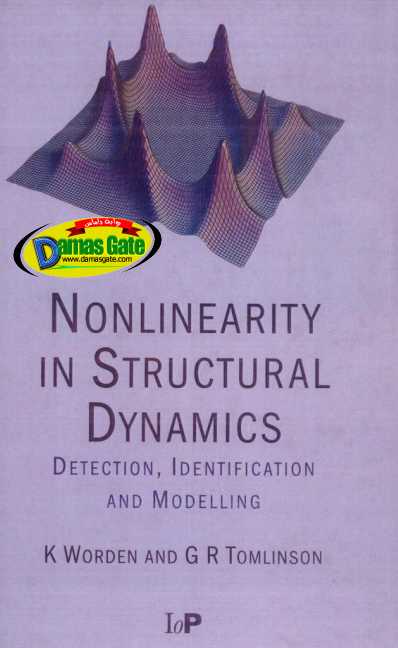Nonlinearity in Structural Dynamics - Detection, Identification and Modelling

Preface
Nonlinearity is a frequent visitor to engineering structures which can modify—
sometimes catastrophically—the design behaviour of the systems. The best laid
plans for a linear system will often go astray due to, amongst other things,
clearances and interfacial movements in the fabricated system. There will be
situations where this introduces a threat to human life; several illustrations
spring to mind. First, an application in civil engineering. Many demountable
structures such as grandstands at concerts and sporting events are prone
to substantial structural nonlinearity as a result of looseness of joints, this
creates both clearances and friction and may invalidate any linear-model-based
simulations of the behaviour created by crowd movement. A second case comes
from aeronautical structural dynamics; there is currently major concern in the
aerospace industry regarding the possibility of limit cycle behaviour in aircraft,
i.e. large amplitude coherent nonlinear motions. The implications for fatigue
life are serious and it may be that the analysis of such motions is as important
as standard flutter clearance calculations. There are numerous examples from
the automotive industry; brake squeal is an irritating but non-life-threatening
example of an undesirable effect of nonlinearity. Many automobiles have
viscoelastic engine mounts which show marked nonlinear behaviour: dependence
on amplitude, frequency and preload. The vast majority of engineers—from all
flavours of the subject—will encounter nonlinearity at some point in their working
lives, and it is therefore desirable that they at least recognize it. It is also desirable
that they should understand the possible consequences and be in a position to take
remedial action. The object of this book is to provide a background in techniques
specific to the field of structural dynamics, although the ramifications of the theory
extend beyond the boundaries of this discipline.
Download
http://s18.alxa.net/s18/srvs2/02/001....Modelling.rar

Preface
Nonlinearity is a frequent visitor to engineering structures which can modify—
sometimes catastrophically—the design behaviour of the systems. The best laid
plans for a linear system will often go astray due to, amongst other things,
clearances and interfacial movements in the fabricated system. There will be
situations where this introduces a threat to human life; several illustrations
spring to mind. First, an application in civil engineering. Many demountable
structures such as grandstands at concerts and sporting events are prone
to substantial structural nonlinearity as a result of looseness of joints, this
creates both clearances and friction and may invalidate any linear-model-based
simulations of the behaviour created by crowd movement. A second case comes
from aeronautical structural dynamics; there is currently major concern in the
aerospace industry regarding the possibility of limit cycle behaviour in aircraft,
i.e. large amplitude coherent nonlinear motions. The implications for fatigue
life are serious and it may be that the analysis of such motions is as important
as standard flutter clearance calculations. There are numerous examples from
the automotive industry; brake squeal is an irritating but non-life-threatening
example of an undesirable effect of nonlinearity. Many automobiles have
viscoelastic engine mounts which show marked nonlinear behaviour: dependence
on amplitude, frequency and preload. The vast majority of engineers—from all
flavours of the subject—will encounter nonlinearity at some point in their working
lives, and it is therefore desirable that they at least recognize it. It is also desirable
that they should understand the possible consequences and be in a position to take
remedial action. The object of this book is to provide a background in techniques
specific to the field of structural dynamics, although the ramifications of the theory
extend beyond the boundaries of this discipline.
Download
http://s18.alxa.net/s18/srvs2/02/001....Modelling.rar